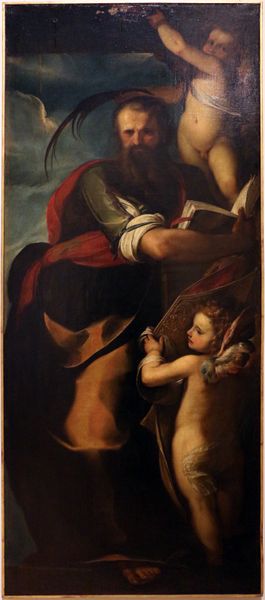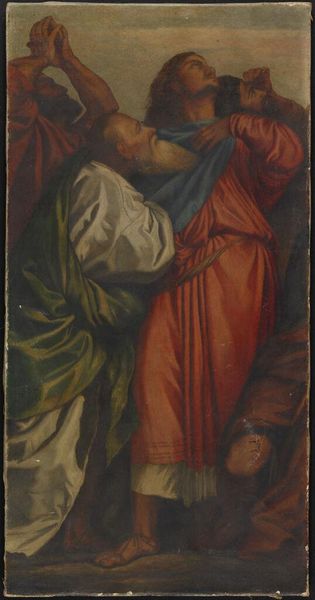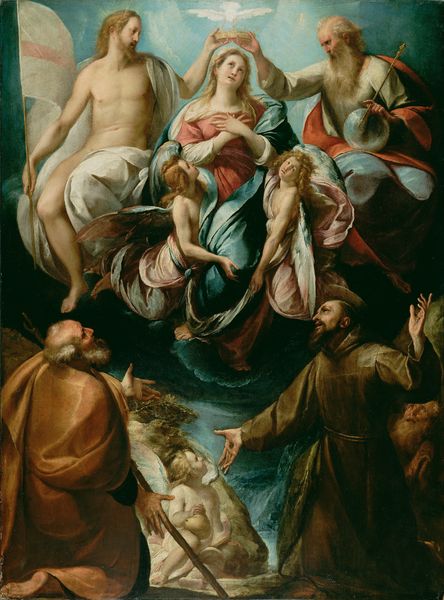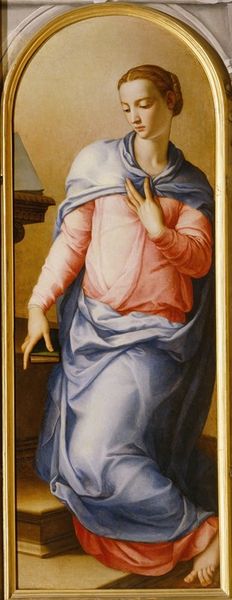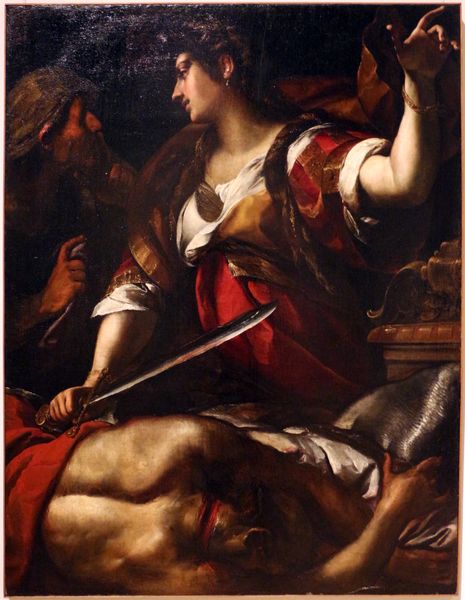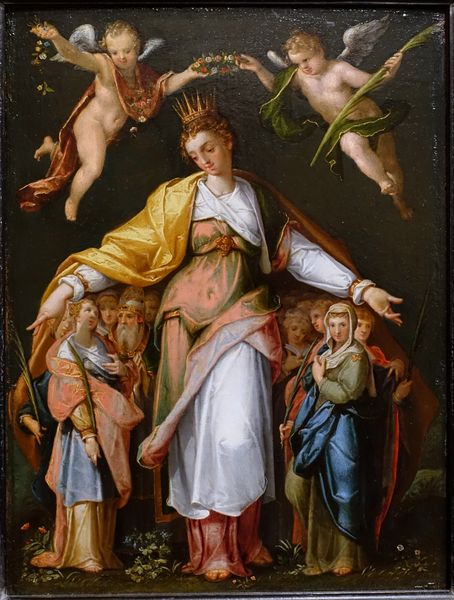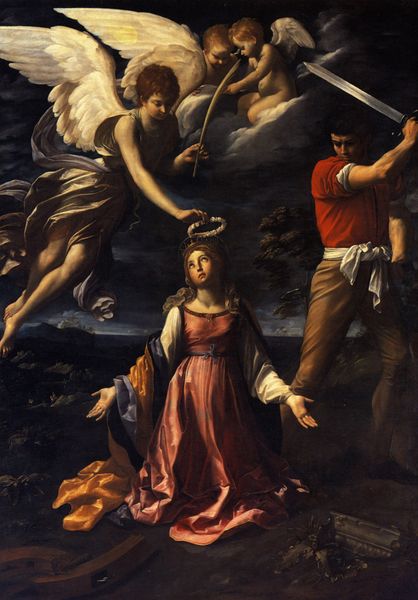
painting, oil-paint
#
portrait
#
painting
#
oil-paint
#
figuration
#
11_renaissance
#
oil painting
#
history-painting
#
academic-art
#
italian-renaissance
Dimensions: overall: 177.8 × 99.1 cm (70 × 39 in.)
Copyright: National Gallery of Art: CC0 1.0
Curator: Here we have Giorgio Vasari's "Saint Luke," an oil painting dating from 1570 to 1571. It offers a compelling view into the Italian Renaissance. What strikes you most when you first see it? Editor: It's the ox, oddly enough. The bare foot dangling so precariously close – a kind of power dynamic on display. And beyond that, a very traditional and idealized depiction. The saint seems… posed. Curator: The ox, as you know, is the traditional symbol associated with Saint Luke. Vasari, a noted art historian himself, likely intended the pose and classical aesthetic to reflect Luke's status and the artistic ideals of the period. It reflects a desire for a sense of ordered grace, heavily influenced by the revived interest in classical antiquity. Editor: Order perhaps leaning into forced reverence? Look at the halo – so precisely placed. Does it speak to devotion, or does it dictate it? And Saint Luke—absorbed in his writing, seemingly oblivious to the animal at his feet, a striking divergence of worlds. I am drawn to consider what this says about knowledge production in an elitist system. Curator: Remember the social and political environment. Art played a didactic role. Artists like Vasari sought to ennoble their subjects. It wasn’t just about religious representation, it was nation-building through imagery, affirming power structures. These depictions influenced social consciousness, guiding people toward a specific understanding of faith and the artist’s status as genius. Editor: And to what extent was that guided consciousness genuine faith versus performative allegiance, given that power dynamic? It highlights art's function as cultural apparatus. We are challenged to consider what the visual cues indicate to contemporary viewers regarding issues such as sanctity, scholarship, and hierarchy. Curator: It does complicate a straightforward understanding of devotional art, doesn’t it? Still, the craftsmanship, the mastery of light and shadow, the details, the drapery—it's undeniably impressive. Editor: Agreed, technically stunning. However, critically reassessing the ideological underpinnings of these canonical images makes experiencing art all the more interesting for me. It reframes conventional wisdom, allowing us to acknowledge historical realities and reimagine their reverberations today.
Comments
No comments
Be the first to comment and join the conversation on the ultimate creative platform.



